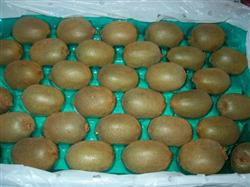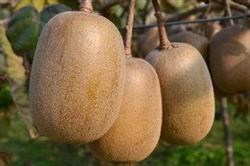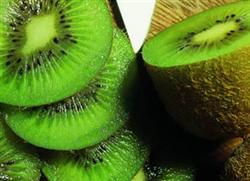Storage technology of kiwifruit

First, strengthen field management: fruit quality is the key to kiwifruit storage and preservation. Strengthen soil management, formula fertilization; scientific flower and fruit thinning, formulate a reasonable leaf-fruit ratio; protect natural enemies, strengthen pest control; scientific pruning, do not use Daguoling and other hormones, first ensure high quality and then create high yield, in order to improve taste. Second, scientific harvest: 1. Harvest precautions: no irrigation into the garden within 5 days before harvest, no application of nitrogen fertilizer within 20 days, no dew picking within 6 days after rain or in the morning, fruit pickers must cut fingernails with gloves, do not drink before harvest, and do not smoke during harvest. two。 Harvest technology and requirements: harvest in time to achieve its due flavor and quality, in order to facilitate storage. The main results are as follows: (1) kiwifruit ripening in different parts of the same orchard and different parts of the same plant can not be consistent, so kiwifruit should be harvested in batches, first outside, then inside, first up and down, according to the requirements, good fruit and no damage fruit should be harvested according to the requirements, and the practice of sweeping light should be opposed. (2) do not harvest bruised, strained fruits, insect pests and malformed fruits with poor pollination, and wrinkled fruits caused by sunburn. (3) when picking the fruit, push the fruit upward, rotate gently, but not pull it hard; handle it gently, carefully ship, damage, pile up and press, and pack (basket) with a single variety. Third, fresh-keeping warehouse management: 1. Disinfection in the library: (1) remove the odor between the storehouses and eliminate the sundries in the storehouse. Wash the floor with saturated potassium permanganate solution or bleach. Fumigate with 5-15 grams of sulfur per cubic meter mixed with dry sawdust, close the door for 24 hours, turn on the machine to cool down after 48 hours. two。 Pre-cooling and bagging: the temperature of the sterilized room or pre-cooling room was reduced to 0 ℃ 2 days in advance. (2) the picked fruit will be pre-cooled within 24 hours (the daily pre-cooling capacity is about 15% of the cold storage capacity), and the storage temperature will be stable at about 3 ℃. After all the pre-cooling is finished, the fruits will be packed in stages according to the requirements. (3) choose an air-tight fresh-keeping bag when bagging, stretch the bottom of the bag and lay it flat in the box, put the fruit layer by layer in the bag to prevent the top of the fruit from damaging or stabbing other fruits, and put in a special antistaling agent. (4) the bagged fruit boxes are stacked according to grade. at present, the ideal stacking method is plum blossom stacking. 3. Storage: kiwifruit storage must grasp the "fourth degree". (1) temperature. Temperature is the most critical factor for kiwifruit storage, and constant low temperature is one of the most effective means to reduce kiwifruit respiration and slow down saccharification and softening. The storage temperature of kiwifruit is different with different varieties, climatic conditions and different storage stages of cultivation techniques. The storage temperature should not only have a suitable low temperature, but also have stage stability. The storage temperature that suddenly cools in a certain period of time is very disadvantageous to the storage and preservation of kiwifruit. The storage temperature close to the freezing point in each stage is the most favorable for storage, generally about 0 ℃, but the sudden change of storage temperature not lower than the freezing point may also cause chilling damage to kiwifruit and affect the quality of storage. (2) Gas concentration. Kiwifruit is a respiratory jump berry, which absorbs oxygen and produces carbon dioxide and ethylene during storage. Reducing the concentration of oxygen, increasing the concentration of carbon dioxide and removing ethylene gas are important means of kiwifruit storage. Ventilation in the reservoir is an effective way to improve the gas environment between the reservoirs, which can remove harmful gases in the environment. (3) humidity: if the humidity is too small, kiwifruit can lose water, wrinkle the pericarp and spread easily. Generally, it should be controlled at 96-95%. (4) cleanliness: there should be not only the cleanliness of the fruit but also the cleanliness of the environment. The fruit must be pest-free and pollution-free, and the infected or rotten fruits should be dealt with in time during storage; sundries should be cleaned up in time to discharge harmful gases. Temperature, gas concentration, humidity and cleanliness are interrelated and influence each other. 4. Standardize the management of the fresh-keeping warehouse: no idle personnel are allowed to enter the warehouse; do not drink or bring aromatic substances into the warehouse; strictly prohibit fireworks; strictly prohibit mixing with volatile fruits and vegetables; ensure that the cold storage is insulated and sealed, and check the temperature regularly; strengthen the quantitative inspection and maintenance of machinery and equipment to prevent self-control failure or cooling out of control.
- Prev

Key points of kiwifruit storage
If there is a pre-cooling room, it can be given 0.75 liters per second? The fruit temperature of 25 ℃-30 ℃ will be reduced to 3 ℃-4 ℃ after 8-10 hours of cold air flow, and then transported to the cold storage. If there is no pre-cooling facility, the fruit can be placed in a cool and ventilated place, precooled for one night, sent to the freezer in the early morning of the second day, and then reduced to 24 hours.
- Next

Key points of kiwifruit planting
Rich in a variety of vitamins and nutrients, known as the "king of fruit", has high economic value and cultivation value. Suitable for mild climate, abundant rainfall, fertile soil, lush vegetation, soil with deep, well-drained, moderately moist black humus soil, sandy loam, pH 5.5-7 slightly acidic soil.
Related
- Moge, come on! The staff of the peasant association in the producing area of cantaloupe were frightened when the crowd gathered.
- Causes and Solutions of low Fruit setting rate of Apple
- Symptoms and control measures of passion fruit virus disease
- Fruit growing lesson: how do apple orchards keep high yields?
- Can you build orchards in the mountains? What are the pros and cons?
- How to manage the coloring period of Crisson grape?
- This paper introduces the processing technology of two kinds of fig products.
- How much is a month for retired teachers in rural areas by 2020?
- How can strawberry planting increase sugar content? We should pay attention to management in many aspects.
- What are the cultivation techniques on how to improve the yield of golden fruit?

